Description
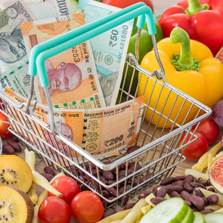
Disclaimer: Copyright infringement not intended.
Context
- Retail inflation dropped to 6.77 per cent in October from 7.41 per cent in the preceding month. This is mainly due to easing prices in the food basket. Though inflation remained above Reserve Bank's comfort level of maximum 6 percent the 10th month in a row.
What is Inflation?
- Inflation refers to a sustained increase in the general price level of goods and services in an economy over a period of time.
- It is the rise in the prices of most goods and services of daily or common use, such as food, clothing, housing, recreation, transport, consumer staples, etc.
- Inflation measures the average price change in a basket of commodities and services over time.
- The opposite and rare fall in the price index of this basket of items is called ‘deflation’.
- Inflation is indicative of the decrease in the purchasing power of a unit of a country’s currency. This is measured in percentage.
|
Purchasing power
Purchase power is a measure of how many goods or services we can buy with a unit of currency. All else being equal, inflation decreases the number of goods or services we would be able to purchase with the same unit.
If one's monetary income stays the same, but the price level increases, the purchasing power of that income falls.
Note: Inflation does not always imply falling purchasing power of one's money income since income may rise faster than the price level. A higher real income means a higher purchasing power since real income refers to the income adjusted for inflation.
|
Measures of Inflation in India
- In India, the Ministry of Statistics and Programme Implementation measures inflation.
- There are two main set of inflation indices for measuring price level changes in India – the Wholesale Price Index (WPI) and the Consumer Price Index (CPI).GDP deflator is also used to measure inflation.
Retail inflation tracked by the Consumer Price Index (CPI) measures the changes in prices from a retail buyer's perspective.
Wholesale inflation on the other hand is tracked by the Wholesale Price Index (WPI), which measures inflation at the level of producers.
Consumer Price Index
- Consumer Price Index or CPI is an index measuring retail inflation in the economy by collecting the change in prices of most common goods and services used by consumers.
- CPI is calculated for a fixed list of items including food, housing, apparel, transportation, electronics, medical care, education, etc. The price data is collected periodically, and thus, the CPI is used to calculate the inflation levels in an economy.
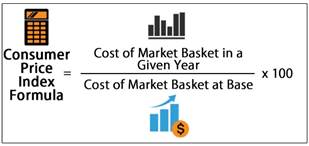
Who maintains Consumer Price Index in India?
- In India, there are four consumer price index numbers, which are calculated, and these are as follows:
- CPI for Industrial Workers (IW)
- CPI for Agricultural Labourers (AL)
- CPI for Rural Labourers (RL) and
- CPI for Urban Non-Manual Employees (UNME).
- While the Ministry of Statistics and Program Implementation collects CPI (UNME) data and compiles it, the remaining three are collected by the Labour Bureau in the Ministry of Labour.
WPI
- Wholesale Price Index, or WPI, measures the changes in the prices of goods sold and traded in bulk by wholesale businesses to other businesses.
Who publishes WPI in India and what does it show?
- The numbers are released by the Economic Advisor in the Ministry of Commerce and Industry.
- An upward surge in the WPI indicates inflationary pressure in the economy and vice versa.
- The quantum of rise in the WPI month-after-month is used to measure the level of wholesale inflation in the economy. Base year: 2011-12. (In the calculation of an index the base year is the year with which the values from other years are compared).
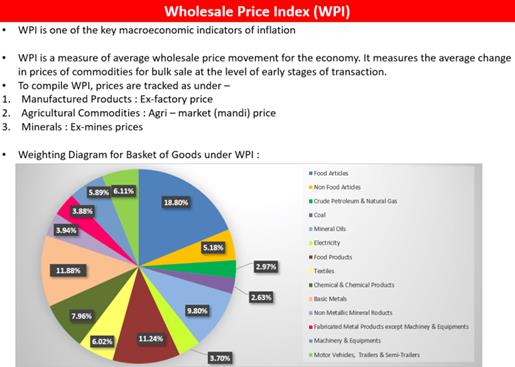
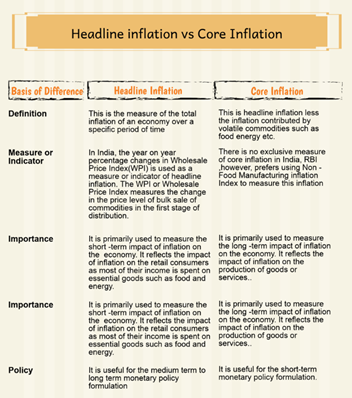
GDP Deflator
- The GDP deflator, also called implicit price deflator, is a measure of inflation.
- It is the ratio of the value of goods and services an economy produces in a particular year at current prices to that of prices that prevailed during the base year.
- This ratio helps show the extent to which the increase in GDP has happened on account of just rise in prices rather than increase in output.
- Deflator covers the entire range of goods and services produced in the economy— as against the limited commodity baskets for the wholesale or consumer price indices.
- Hence, it is seen as a more comprehensive measure of inflation.
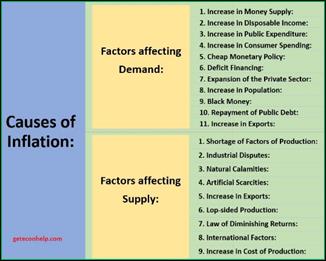
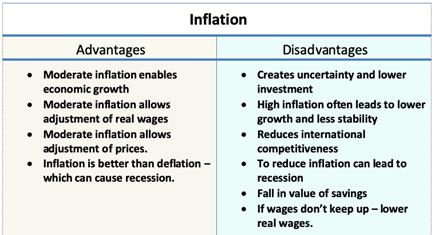
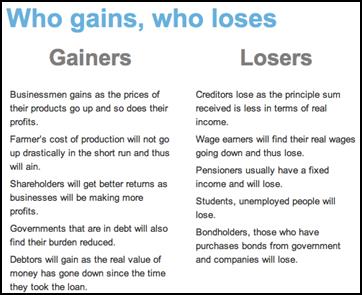
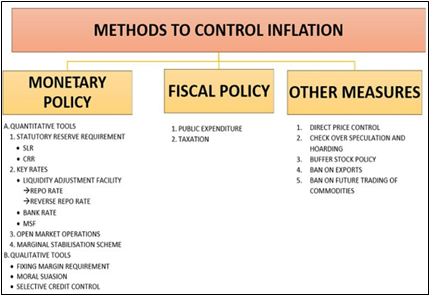
Read Comprehensive Articles here: https://www.iasgyan.in/daily-current-affairs/inflation-29
https://www.iasgyan.in/rstv/perspective-managing-inflation
https://timesofindia.indiatimes.com/business/india-business/retail-inflation-falls-to-6-77-in-october-govt-data/articleshow/95510941.cms























